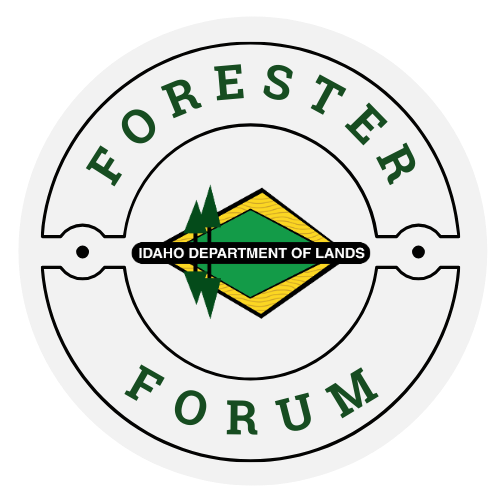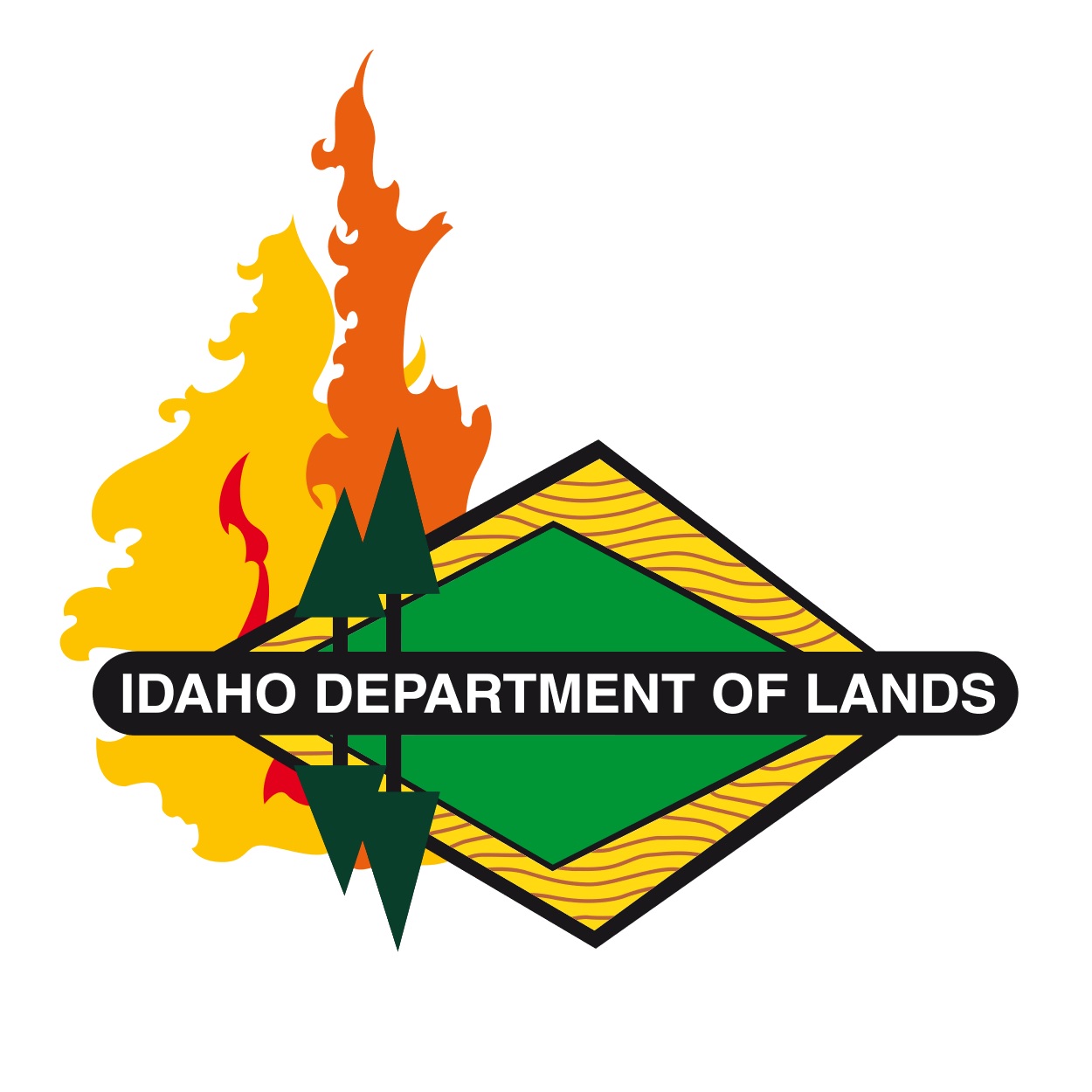Fire Management 1: Idaho’s Fire Hazard Management Laws

Idaho's Fire Hazard Management Laws
In this edition of the Forester Forum
This summary is advisory.
IT IS NOT MEANT TO REPLACE THE RULES AND REGULATIONS OR THE LAW. ANY QUESTIONS SHOULD BE RESOLVED BY CONSULTING THE CURRENT RULES.

Overview
The Idaho Forestry Act and Fire Hazard Reduction Laws (Idaho Code Title 38, Chapters 1 & 4) require management of tops and limbs (slash) from cutting forest products on private forest lands. The laws were written to prevent catastrophic forest fires. History in Idaho has shown that forest fires starting or burning in slash are harder to control, cause more damage, and are more costly.
The State Board of Land Commissioners has adopted rules to implement the slash hazard laws. These rules were developed by the Idaho Department of Lands and representatives of Idaho’s forest landowners and forest industry. The rules are available at any Department of Lands office.
Responsibility Under the Law
Any person cutting forest products, whether landowner, operator, or timber owner must assure that the slash will be treated. You must:
- Obtain a Certificate of Compliance-Fire Hazard Management Agreement-Notification of Forest Practice (one page).
- Provide a copy of the agreement to all purchasers before delivering logs or other products.
- Treat the slash to the standards specified in the rules by the expiration date on the agreement.
- Comply with all terms of the agreement.
Who should get the agreement — Landowner, Operator, or Timber Owner
The person who takes the responsibility for actually treating the slash will get the agreement. They will be called the contractor. In effect, this person is entering into a contract with the state to assure slash treatment. The responsibility for slash cleanup usually is a negotiated term of the timber sale contract between the operator and the landowner. They should clearly understand that the person who gets the agreement is legally liable.
The contractor must have the specific legal description, which includes subdivision, section, township, and range of the harvest area when obtaining an agreement. Mineral survey numbers and subdivision lot numbers are acceptable as informational descriptions, but are secondary to the legal description of the contract area. The contractor must also have the complete addresses for the landowner, operator, and timber owner when obtaining the agreement.
Agreement Options
The agreement has several options for the contractor to manage or reduce the fire hazard created by harvesting operations.
- The no hazard option is available for contractors who are only hauling “a load or two” of logs and will not be cutting enough timber to create a fire hazard. With this option timber harvest is incidental for clearing a few trees to build a garage, or removing timber shading cropland. In either of these examples, the logging debris is disposed of. The no hazard option can also be used for salvaging low volumes of windthrow or diseased timber. The rules are not specific to the size of the job. Decisions should be reached after consulting with the district fire warden.
- The holdback option requires the contractor post a cash bond to guarantee slash will be treated to rule standards. This bond is usually paid from log delivery payments by the purchasing mill and forwarded to the state. However, for some products or operations, the contractor may choose to post an advance cash bond for the full amount of the products to be harvested. Currently, the bond is $4.00 per thousand board feet. The state holds the money in a special project account. After the hazard reduction is completed as outlined in the rules, the bond is returned to the contractor. A fee of $.24 per thousand board feet is withheld for the Emergency Fire Suppression Fund and FPA Administration.
- The surety bond options allows the contractor to post a surety bond instead of a cash bond. The bond must be on a state form and be sufficient to cover the volume of harvested timber. The contractor must treat the slash as outlined in the rules within the agreed time period. When the work is completed, the bond is released. A fee of $.24 per thousand board feet must be submitted annually for the Emergency Fire Suppression Fund and FPA Administration.
- The contract option provides for the landowner or contractor to contract with the state requiring the local forest protective district to treat the slash. The district fire warden can accept the contract and the slash rate for the contract is variable. If the warden signs a contract, the state agrees to complete the slash job according to rule specifications.
- The additional fee option assumes state liability for the cost for suppressing any fires that start on or pass through the area specified on the agreement. The additional fee is based on the hazard characteristics of the specific job. However, if the contractor chooses hot to treat the slash and prefers to pay the additional fee at the time the products are taken to the mill, an interim agreement can be made. The original $4.00 per thousand feet slash fee is also forfeited to the state.
Time Limits for Agreements
The period for any agreement should be based on the size and complexity of the job and on the forestry objectives of the landowner. As a general rule, agreements can be written for two years.
However, the contractor may negotiate an interim treatment of slash with the fire warden for the period over two years. Agreements can be written for any job duration.
The time limit for the agreement is important. All slash work must be completed by the agreement expiration date. Extensions are available upon written request with good cause.
Standards for Hazard Reduction
When the contractor signs the agreement, he agrees to treat the slash to rule standards and within agreement time limit. The rules outline a hazard rating system based upon points. Points are added to a job based on slash quantity, site factors (slope and aspect), unit size and other factors such as proximity to structures. The rules also provide a .menu. of techniques to offset the hazard.
Hazard Offsets
- Disposal – Piling and burning/burning in place.
- Isolation – A system of fire lines and fuel breaks to isolate the slash from the nearby stands.
- Modification – Slash, chipping, crushing, or loping.
- Other Factors – Locked gates, better water sources or other control measures
What Happens If The Hazard Reduction Work Is Not Done?
The contractor has until the agreement expiration date or any extensions to complete slash management in accordance with the rule standards. If the slash work is not done, the contractor will incur suppression liability costs for any wildfires started on or passing through the slash area for five years after the agreement expiration. However, the contractor can pay an additional fee based on the remaining hazard points charged against the job. Upon payment of the fee, the state will assume fire suppression liability

